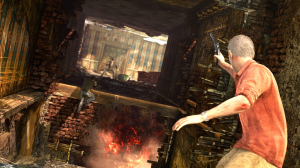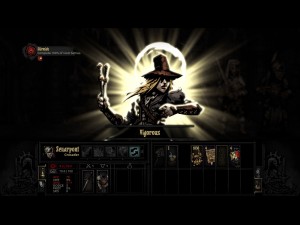During a recent live cast, we got on the discussion of the company culture in the Game Industry. Just because studio names like Naughty Dog, Blizzard, Bungie, and more are still around, doesn’t mean that they’re the same studio when they were creating their hits. People go on to new jobs or are fired, but no matter the case, the studio changes.
And this creates an interesting and challenging topic to talk about: Just who is responsible for the success of a video game?
There’s No I in Team:
Video Game Design for just about 99.9% examples in the world is a collaborative effort. From small groups of people to massive studios, a lot goes into the making of a video game. As more and more people are added to a project, it becomes harder to see each individual contribution.
When we start talking about major studios made up of several hundred employees, the discussion gets even tougher. One of the strangest aspects of the game industry and covering games is the “celebrity factor” that becomes a part of the most successful studios.
Companies like the ones mentioned above have become famous thanks to their best selling games, but how many people know who was responsible for said game? Very few game companies give recognition or prop up their game designers; the only ones that immediately come to mind would be Nintendo and Blizzard. For the majority of studios, most people only know them for the games, not the people who made them.
When studios get restructured or people leave, general fans may be confused as to why subsequent games from a studio they loved are no longer of the same quality. Just because the same studio is working on the same brand doesn’t mean it really is the same exact team. That brings us back to the question at the start: Just who is responsible for the success of a video game?
What is Game Design?
Game Design is a very amorphous topic. Despite the game industry being more than 30 years old at this point, the craft of game development is still not easily explained. While it does include aspects of art and programming, having the knowledge to create engaging gameplay loops is a skill all to itself.
However, at the end of the day, when we’re talking about large studios, just how important was the game designer to the success of the project? Most AAA development is all about iterating and improving on design; AKA — working from an existing template. Once a design has been established, that creates a blueprint that any design team can follow. This creates a very interesting topic of series that were developed by multiple studios and the differences in the games, but that’s off topic.
For major series like Call of Duty, Battlefield, and Assassin’s Creed, how much would losing a core member hurt these games? Due to the collaborative nature of game development, losing someone in a AAA studio doesn’t mean that the game gets cancelled.
With that said though, during our cast we may have inadvertently stumbled upon the perfect distinction for Indie developers.
The Indie Distinction:
Another popular argument that has come up in game culture has been: What is an Indie Company? And thinking about it and our talk about on game designers, I think I may have a practical working definition.
An indie company is a place that is so defined by its core staff that if one person leaves or quits, the whole project falls apart. One of the best parts of Indie development is the fact that you are able to make whatever kind of game you want. Due to the smaller development teams, each person on staff is crucial for getting the game done.
When I speak to the designer on an Indie game, I know that they were the vision behind all aspects of said game. Depending on the team dynamic, roles may be shared between the various members, but it’s not the same as a major studio where you could have entire departments dedicated to each aspect of the title.
For games built on unique designs and mechanics, the game designer is definitely the soul of the game. More importantly, this is where a lot of the risks come in when building a game and why AAA companies prefer refinement.
The Art of Game Design:
Figuring out what makes a good game designer is a task that companies have been trying to do since the ’90s. Unlike programming and art, it’s difficult to determine hard skills needed to build a game’s design.
And once we start talking about established genres like FPS, platformers, and the like, does a single person make a difference? Again, in a team of dozens or hundreds of people, is the weight of a game’s success on the shoulders of the game designer?




